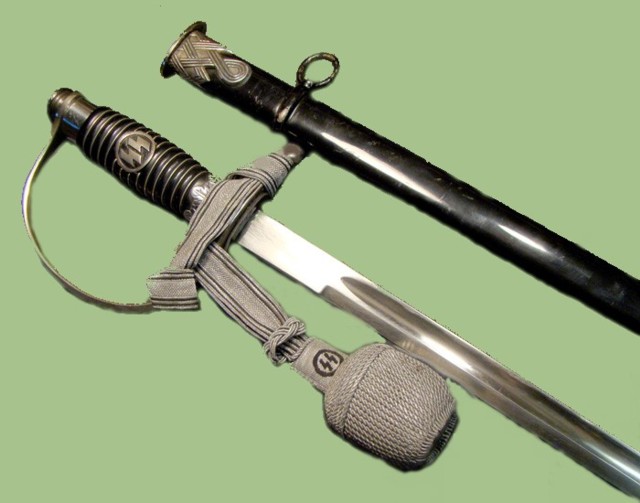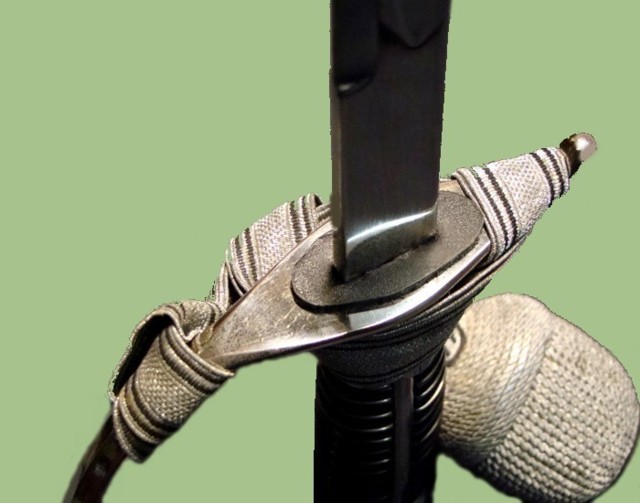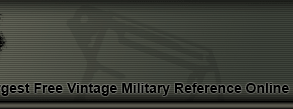WWII German SS Officer's Sword -
The SS was formed in 1925 as a personal guard unit for Nazi leader Adolf Hitler, "Die Schutz-Staffel der NSDAP" (Shield Squadron of the NSDAP). Under the leadership of Heinrich Himmler between 1929 and 1945.

The design of the sword consisted of a circular, silver pommel which extends into the handguard. It is
followed by a black handle with circular wire-wrapping which is interrupted by a vertical line that connects
the pommel to the crossguard.
One side of the handle shows the SS runnes done in silver metal and enclosed in a circle of the same
material. The base of the handle has a silver crown shape. The runnes are fairly thick and prominent.
The overall design of the sword is elegant and visually attractive.
A portapee is attached to the sword.

The blade was of single edge design. It was not sharpened as the sword was not intended for use in combat
but rather as a status symbol.
The scabbard was of metal construction and painted black. A single suspension ring is attached to one side.
The throat and chape of the scabbard were complemented with silver fittings. The throat fitting displayed a
linear design forming a single loop at the bottom.

|
This page is a recognition and identification guide for German bayonets. Multiple
detailed photos of a specific sample are provided. Descriptions point out specific
points that should be noted.
One of the most commonly asked questions is "How much is my German bayonet worth?".
A price guide is included here to address this question. The value of the Nazi bayonets is
reviewed over a period of several years. A trend can be observed. The present worth
of the police sword in the collector's market is illustrated.
This service is provided free of charge to the visitor/enthusiast courtesy of
MilitaryItems.com,
a company dedicated
to the preservation of military history and to providing quality military antiques and
collectibles to museums, institutions and the general public.
|
|

The bottom section of the knot reveals part of the ribbon used to tie the portapee to the sword.
The pattern employed to tie the device is shown in the photograph below. There were three different
lengths of portapee ribbons available. Some of them were used with dress bayonets.
The early version of the portapees came with an RZM tag. The later models did not have any
tags or markings.

The following photogrpah provides a top view of the way in which the portapee is secured to the sword.
The throat gasket is also visible.

A close look at the portapee reveals a tightly woven pattern of silver thread. The ball is attached to
a ribbon which is silver in color and has multiple blacl lines on the edges. The lines cover the entire
length of the ribbon.
The throat of the knot has the SS runned embroidered in black thread and enclosed in a circle of the
same type of thread.

Many German edge weapons are currently
reproduced.
It is becoming more difficult to be able to tell the fake ones from the real ones because
the quality of the reproductions is improving. The collector must become familiarized with
the construction style and materials employed in the manufacturing of this item.
Attention to the details is critical in order to be able to determine the authenticity of
the collectible.
If you have an interest is seeing other edge weapons of the Third Reich, you can do so by going
to our
WWII German daggers and Swords
identification guide, Where we cover blades from the Heer (Army), Navy (Kriegsmarine), Air Force
(Luftwaffe) and other organizations.
|







